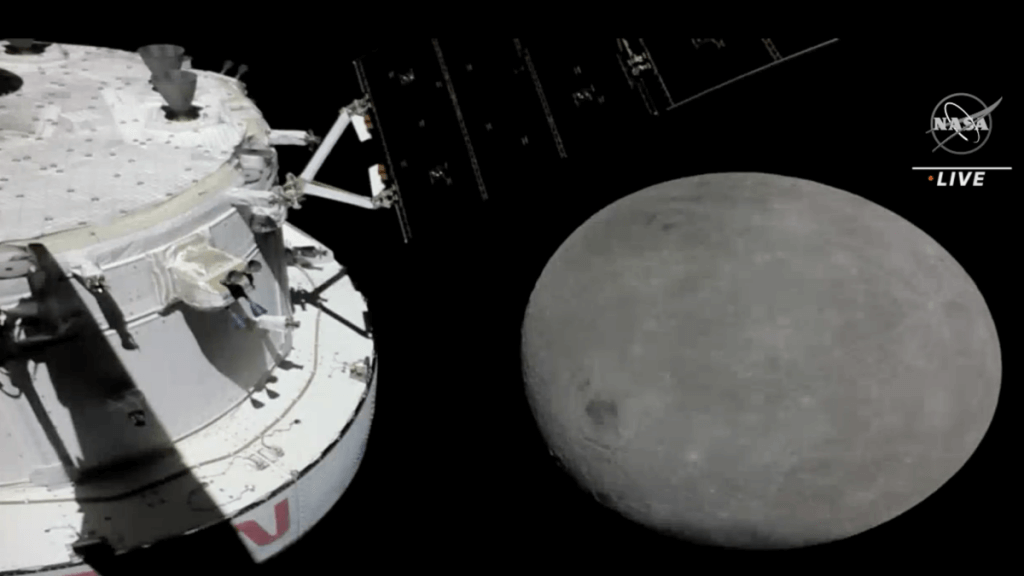NASA‘s new exploration spacecraft is swooping around the moon.
It’s a critical part of the space agency’s Artemis I mission, which involves the first test of the Orion capsule that will one day (perhaps as early as 2025) fly astronauts on a historic journey to land on the moon. The most powerful rocket on Earth, NASA’s Space Launch System, successfully blasted the uncrewed Orion into space last week.
NASA beamed back images from the spaceship as it passed just over 80 miles (130 kilometres) above the lunar surface on Nov. 21. During the fly-by, the space agency also looked back and captured a distant view of our humble, cloudy planet. Mission engineers are testing out Orion’s capabilities in different lunar orbits, and in the coming week it will travel over 40,000 miles beyond the moon — farther than any spacecraft built for passengers has ever flown.
“Fly-by complete!” NASA’s Jim Free, the agency’s associate administrator for Exploration Systems Development, tweeted Monday morning. “@NASA_Orion completed its closest fly-by of the Moon this morning, 81 miles above the lunar surface, traveling 5,102 mph.”
Below is an image from Orion as it approached the moon. Following that is a view of Earth from some 230,000 miles away.

Credit: NASA
Credit: NASA
As Orion flew past the moon, NASA fired its engines for two and a half minutes, known as a “burn,” to boost the spacecraft’s speed to 5,102 miles per hour. This was necessary to help guide Orion to a special orbit that will swing it well beyond our natural satellite.
The Artemis mission is a huge federal investment of some $4.1 billion per launch and expedition. Why is NASA spending so much to return to the barren lunar surface? The U.S. wants to establish a base on the lunar South Pole, allowing NASA to harvest water ice and potentially ingredients for fuels that might day enable future, deeper space missions to resource-rich places in the solar system. Learning how to survive on the moon will also prepare the space agency for extremely ambitious crewed missions to Mars, perhaps sometime in the latter end of next decade.
But first, the Orion spacecraft must successfully complete its journey around the moon, and then survive scorching temperatures. During this test, NASA will push Orion to the limit: It will plummet through Earth’s atmosphere at 24,500 miles per hour in 5,000 degree Fahrenheit conditions.
Three mannequins are now strapped to seats inside Orion. In the coming years, however, those seats could be occupied by brazen astronauts.

